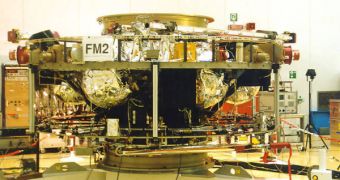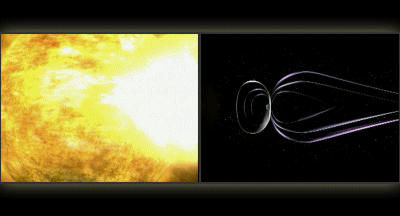Astronomers are puzzled each time readings from satellites monitoring solar activity and the Earth's magnetosphere come in, because they realize exactly how little they know about the complex phenomena that ensure life on the planet is not wiped out every time the Sun acts up. In such a recent episode, ESA experts analyzed data coming in from the agency's four Cluster satellite, and the two Chinese/ESA Double Star observatories, all assessing the impact that solar flares and coronal mass emissions (CME) have on our protective, magnetic shield.
They learned that every time a flare slams into the planet's magnetosphere, it compresses the latter to a great extent, but rarely manages to penetrate it. Left-over energy, that is not diverted passed Earth, falls down on the magnetic lines that exit our planet's poles, and create the phenomena known as the northern and the southern lights, or auroras. The recent investigation performed by the European Space Agency had the goal of determining exactly how this compression affects satellites in orbit, and especially those handling the delicate Global Positioning System (GPS) data.
The main danger of CME heading towards Earth is the fact that they have the ability to energize ions near the planet's surface, thus generating large amounts of unusual radiation. These increased amounts of radiation can easily disrupt communications with satellites in orbit, and thus create large and widespread black-outs in areas where satellite communication is commonly-used. Not even electricity grids and household appliances escape the increased levels of energized ions, which can cause them to fry and be destroyed over short periods of time.
“With these detailed observations, we’ll be able to plug in data and better estimate what happens to the inner magnetosphere and near-Earth space during such explosions on the Sun,” explained the lead author of the recently-published results, Cluster Ion Spectrometer principal investigator Iannis Dandouras. “Looking at such a large-scale physical phenomena with a single satellite is akin to predicting the impact of a tsunami with a single buoy. With Cluster and Double Star we have monitored both sides of Earth simultaneously, and obtained valuable in-situ data,” added the project scientist for the European Space Agency's Cluster and Double Star missions, Matt Taylor.
Photo Credit: ESA via SpaceFellowship

 14 DAY TRIAL //
14 DAY TRIAL // 